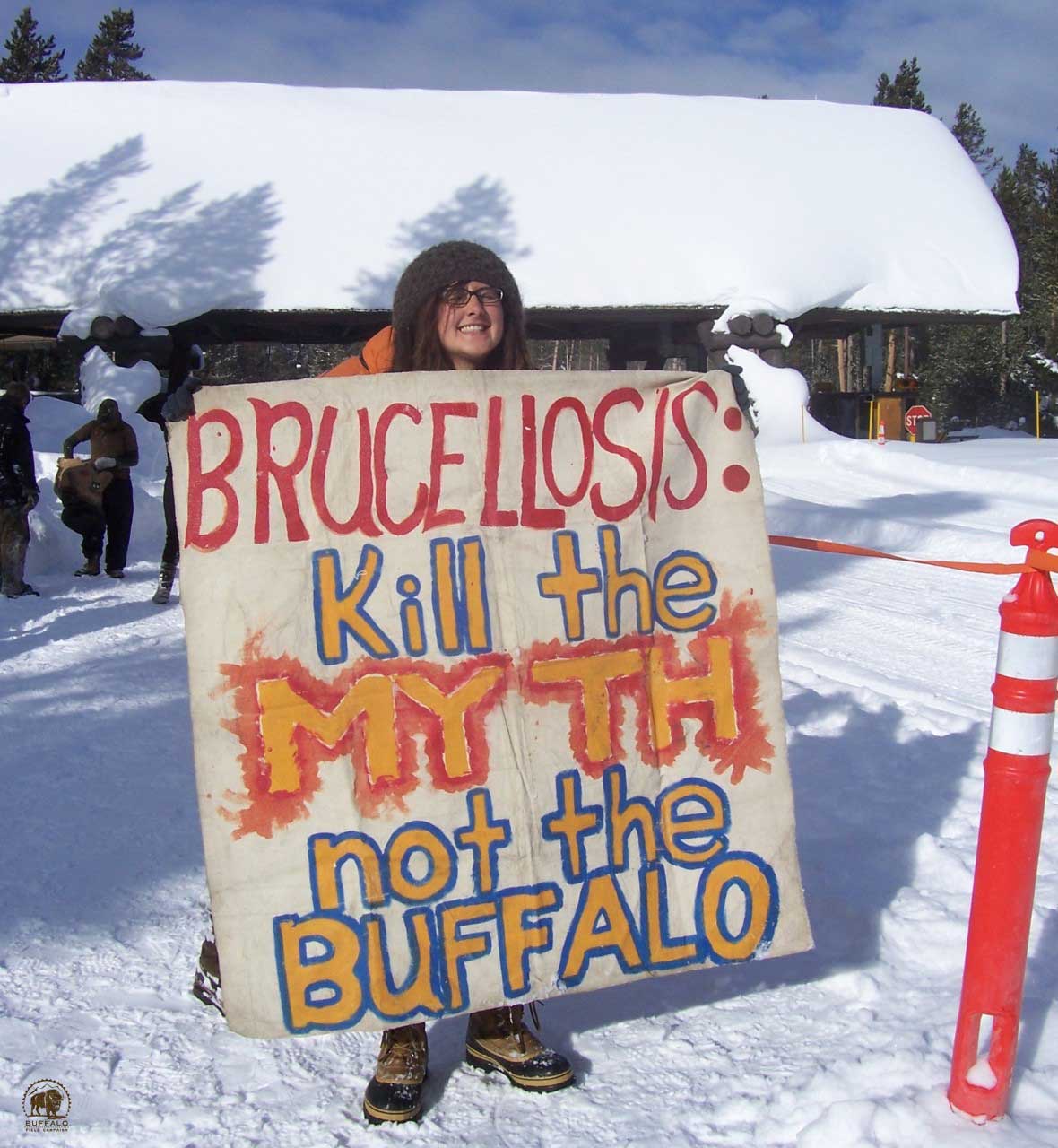Your comments are being accepted by the USDA Animal & Plant Health Inspection Service and the Center for Disease Control and Prevention.
Brucellosis (B.abortus) an invasive disease that impacts cattle, elk, and bison. This disease came to the North American continent with invasive cattle. Through improper wildlife management, decades ago brucellosis entered into the Yellowstone bison population, and consequently elk. For decades Montana’s livestock industry has waged a war against wild buffalo, claiming that the native bovines threaten their industry because they might give brucellosis (back) to cattle. There has never once been a documented case of wild bison transmitting brucellosis to cattle, even where they have coexisted. Regardless, thousands of wild, migratory have been slaughtered, quarantined, hazed, excessively hunted, experimented on and otherwise harmed because of this perceived threat.
The cattle industry brought brucellosis to this continent, and they should take responsibility for it by vaccinating their cattle rather than waging a war against wild buffalo. There are seven counties in Montana that surround Yellowstone, which has been declared a Brucellosis Designated Surveillance Area (DSA). Within the DSA ranchers are required to vaccinate against brucellosis, but the vaccine that is available is not effective. Research to develop a livestock vaccine that actually works has been halted because B.abortus was added to the Center of Disease Control & Prevention's Bio-Terror Agent List.
Right now there is an opportunity to get B.abortus removed from this list, which would open the door to develop a brucellosis vaccine for cattle that actually works. While we all know that the cattle industry has been using brucellosis as an excuse to kill and control wild buffalo for decades, once they have an effective vaccine, this excuse will no longer be able to be used.
TAKE ACTION!
The agencies below are accepting comments through May 18, 2020. We have provided a sample letter below that you may choose to snail mail or send to them through their web forms linked below. Please feel free to edit your letters as personalized messages have the most impact. We apologize that we can’t offer the ease of clicking a button to send your comments, but the agencies didn’t provide email addresses.
USDA APHIS, Regulatory Analysis & Development, PPD, APHIS
Station 3-A03.8
4700 River Road, Unit 118
Riverdale, MD 20737-1238
RE: Comments on Select Agent Rule, Docket No. APHIS-2019-0018
SUBMIT COMMENTS HERE: https://www.regulations.gov/document?D=APHIS-2019-0018-0001
— and —
Division of Select Agents and Toxins, Centers for Disease Control and Prevention
ATTN: RIN 0902-AA71
1600 Clifton Road NE
Mailstop H21-7
Atlanta, GA 30329
RE: Comments on Select Agent Rule, Docket No. APHIS-2019-0018
SUBMIT COMMENTS HERE: https://www.regulations.gov/document?D=CDC_FRDOC_0001-0117
SAMPLE COMMENT LETTER (copy and paste and submit to the links above):
To Whom it May Concern,
I am submitting comments on the Select Agent status of Brucella abortus. I support the removal of B.abortus from the select agent list. My background and connection to this issue is that I am a strong advocate for wild, free-roaming bison (buffalo).
The last known reservoirs of B.abortus exist within the Greater Yellowstone ecosystem, and decades ago, both bison and elk were exposed to this livestock disease. The cattle industry maintains a position of fear that wild bison may pose a brucellosis threat to cattle, though not a single case has ever been documented. Regardless, the wild bison of Yellowstone country — the last continuously wild herds — continue to be a target of the livestock industry, and thousands have been slaughtered, quarantined, hazed, excessively hunted, experimented on and otherwise harmed because of this perceived threat. Elk have been implicated in transmitting B.abortus to cattle in Montana, Wyoming, and Idaho more than 27 times since 1998. While elk are rightly free to roam, there is an ongoing war waged against wild, migratory bison in the name of brucellosis. Both important wildlife species, however, are unfairly targeted by the livestock industry due to brucellosis.
There is currently no safe or effective brucellosis vaccine for livestock. Cattle ranchers should be required to vaccinate their livestock against brucellosis. Many in some Montana counties surrounding Yellowstone - within the Brucellosis Designated Survellience Area) are required to do so. But the vaccine they are using does not work. Currently, ranchers are using RB 51, which does not offer full protection against brucellosis.
Delisting B.abortus from the Select Agent List is important so that effective research can be conducted towards the development of improved vaccination for livestock, diagnostics, and other livestock management options.
Thank you for this opportunity and your consideration of my comments.
Sincerely,

